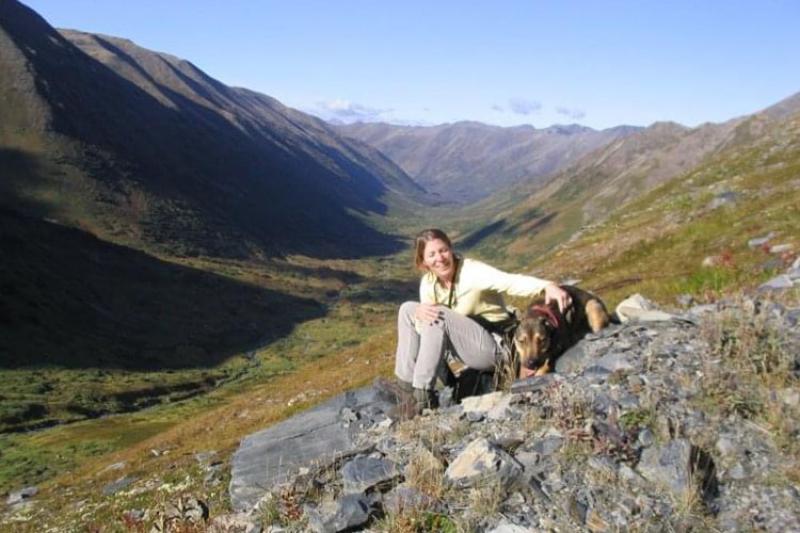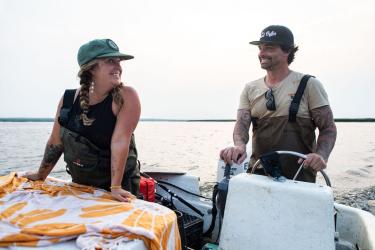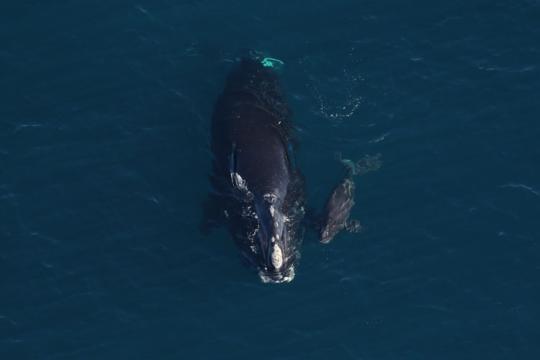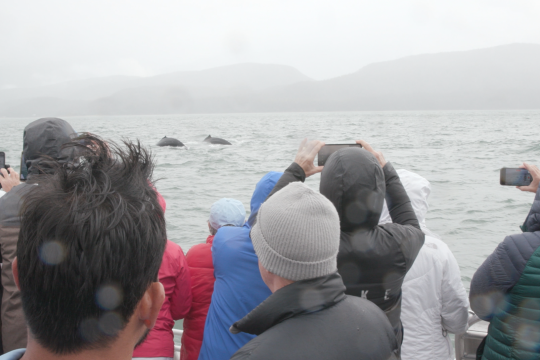Editor's Note December 4, 2023: Endangered North Atlantic right whales are approaching extinction. There are approximately 360 individuals remaining, including fewer than 70 reproductively active females. Human impacts continue to threaten the survival of this species.
What do you do as the Right Whale Recovery Coordinator for NOAA Fisheries Greater Atlantic Region?
I work with various NOAA Fisheries experts and federal, state, and academic partners on issues related to the status and conservation of right whales. I serve as the coordinator of the North Atlantic Right Whale Recovery Plan Northeast U.S. Implementation Team. I support the efforts of the Implementation Team’s Population Evaluation Tool Subgroup. My work is focused in the Northeast United States (Maine to Virginia). However, North Atlantic right whales can occur from Canada through Florida, so I also work with experts on right whale recovery outside the Northeast. For example, I worked with various experts to develop the North Atlantic Right Whale Five Year Priorities Action Plan based on its 2019 Species in the Spotlight designation. I also coordinated on a North Atlantic Right Whale Scenario Planning Summary Report as a follow-up to a scenario planning exercise hosted by NOAA Fisheries.
What do you like best about your job?
Getting to work with people with various expertise and perspectives who share a common goal to further North Atlantic right whale recovery. I work with so many partners inside and outside of NOAA Fisheries, helping coordinate and prioritize right whale recovery actions. Right whale recovery cannot be done by any one agency or person.
What’s the hardest part of your job?
The hardest part of my job is knowing how vulnerable North Atlantic right whales are to extinction. I am committed to do what I can to help these whales. Fortunately, right whales have people both inside and outside NOAA Fisheries working tirelessly every day to help save them. That gives me hope.
How long have you been in this position, and what did you do before?
I started as the region’s North Atlantic Right Whale Recovery Coordinator in the fall of 2017. Before that, I worked on climate change issues, conservation efforts for various protected species, and served as the Atlantic Large Whale Take Reduction Plan Coordinator for 9 years. The experience I gained from these other positions has really helped me in my current role, which requires integrating information from across many disciplines and programs. For example, we are concerned about how climate change is impacting right whale food sources.
Also, I am working with some of the same partners I used to work with as the Plan Coordinator. Working on reducing the impacts of commercial fishing gear entanglements on large whales, I learned that it is essential to involve stakeholders early in the decision making process. I apply that lesson in my job today. I have been fortunate to have been able to work in both management and science positions during my career.
What educational background helped you get to your career today?
I have a B.A. in Zoology from the University of New Hampshire and a M.Sc. in Biopsychology from Memorial University of Newfoundland. My M.Sc. thesis investigated the effects of industrial activity (i.e., dredging, blasting and vessel traffic) on humpback and minke whales and harbor porpoise using abundance, distribution, respiration, and photo-identified animals as indicators. This included two field seasons of marine mammal boat surveys. Working those surveys helped me appreciate the hard work that goes into marine mammal science.
What’s something most people don’t know about you?
I grew up in central Massachusetts and spent a lot of time helping my parents on their vegetable farm. But I had a passion for the ocean from a young age. This grew into wanting to work on marine mammals, so I took any opportunity I could after graduating from college to get experience. I traveled and learned from researchers while working in Hawaii on humpback whales, in the Mingan Island/ Anticosti region of Canada on blue whales, and in the Mid-Atlantic on bottlenose dolphins. I also worked as a fisheries observer in the Northeast and Mid-Atlantic.
In particular, the opportunity to work and live in Newfoundland for my M.Sc. degree allowed me the opportunity to immerse myself in both research and the community. I lived there for a few years, learning from my graduate supervisor, Dr. Jon Lien, and others. I also worked closely with many people living in Trinity Bay. In fact, in my graduate thesis, I credit some of the Newfoundland families I met as the data presented would not have been possible without their support. I have learned from so many top marine mammal experts! The list is so long that I could fill a page. I am grateful to each of them as they helped me bring my passion to reality. My career path led me from science to my more recent work in policy and management.
What advice would you give young people starting their careers?
I would say follow your passion and don’t be afraid to try new experiences or travel far to get them. The ocean and the species that live there need us all to help solve the big problems they face. The key is working together!









